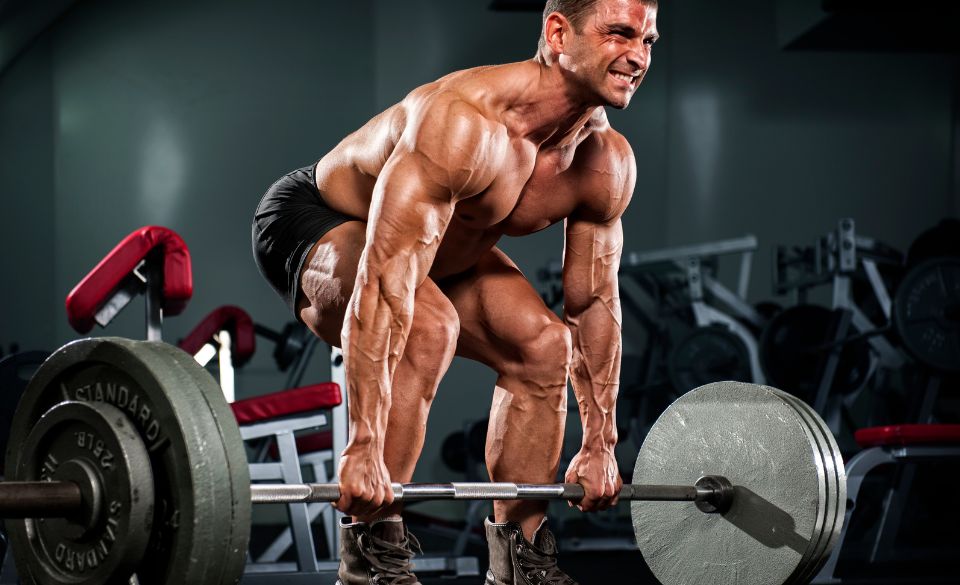
Weightlifter’s Shoulder: Understanding the Causes, Treatment & Prevention
Page Contents
Whether you’re new to weightlifting or a seasoned pro, you know that the world of lifting is full of challenges and rewards. However, one of the challenges that many weightlifters face is dealing with injuries. One common injury that can occur is weightlifter’s shoulder. If you’re experiencing pain or discomfort in your shoulder area, don’t worry, you’re not alone! In this article, we’ll go over what weightlifter’s shoulder is, what causes it, and how to fix it.
What Is Weightlifter’s Shoulder
Weightlifter’s shoulder, also known as distal clavicular osteolysis, is a common injury that weightlifters can experience. This condition affects the shoulder joint, which is composed of three bones: the humerus, scapula, and clavicle. Weightlifter’s shoulder specifically occurs when the end of the clavicle bone, where it meets the scapula, begins to break down and become damaged, leading to pain and inflammation in the shoulder area.
The repetitive overhead lifting, such as overhead presses or snatches, puts a lot of stress on the shoulder joint, especially the clavicle bone. Over time, this stress can cause the bone to break down and become damaged. Moreover, poor form while lifting can also contribute to the development of weightlifter’s shoulder. Using proper form and technique while lifting is essential to avoid such an injury.
What Causes Weightlifter’s Shoulder
Weightlifter’s shoulder is typically caused by repetitive overhead lifting and poor lifting technique. A study published in the Journal of Shoulder and Elbow Surgery found that weightlifters who performed repetitive overhead lifts had a higher incidence of distal clavicular osteolysis, which is the medical term for weightlifter’s shoulder. The study also found that weightlifters who trained for longer periods and had higher levels of training intensity were more likely to develop this injury.
Another study published in the Journal of Athletic Training found that poor lifting technique was a significant risk factor for developing weightlifter’s shoulder. This study found that weightlifters who used improper form while performing overhead lifts had a higher incidence of distal clavicular osteolysis.
It’s also worth noting that weightlifter’s shoulder can be caused or exacerbated by certain factors such as anatomical variations, age, and gender. A study published in the Journal of Orthopaedic Surgery and Research found that older weightlifters and those with smaller acromial width (the distance between the acromion and coracoid process of the scapula) were more likely to develop distal clavicular osteolysis.
Repetitive overhead lifting, poor lifting technique, and certain anatomical variations are significant risk factors for developing weightlifter’s shoulder. By using proper form while lifting and being aware of these risk factors, weightlifters can take steps to prevent this injury from occurring.
Can I Lift With Weightlifter’s Shoulder
If you’re experiencing pain or discomfort in your shoulder area, it’s important to give your body time to heal. Continuing to lift with weightlifter’s shoulder can make the injury worse and prolong your recovery time. However, that doesn’t mean you have to give up lifting altogether. Depending on the severity of your injury, you may be able to modify your lifting routine to work around your injury. Consult with a medical professional to determine the best course of action for your specific situation.
How To Fix Weightlifter’s Shoulder
If you’re experiencing weightlifter’s shoulder, there are several steps you can take to help fix the condition and prevent further damage. Here are some ways to fix weightlifter’s shoulder:
1. Rest: One of the most important things you can do to fix weightlifter’s shoulder is to rest the affected shoulder. Take a break from lifting weights or performing any overhead movements that cause pain. This will help give your shoulder time to heal.
2. Ice and heat therapy: Applying ice to the affected area can help reduce inflammation and pain. After a few days, you can switch to heat therapy to help increase blood flow and promote healing.
3. Physical therapy: A physical therapist can help you learn exercises and stretches to help strengthen the muscles around the shoulder joint and improve flexibility. They can also help you improve your lifting technique to prevent further damage.
3. Medications: Over-the-counter pain relievers, such as ibuprofen or acetaminophen, can help reduce pain and inflammation. If your pain is severe, your doctor may prescribe stronger pain medications or anti-inflammatory drugs.
4. Surgery: In severe cases of weightlifter’s shoulder, surgery may be necessary to remove the damaged part of the clavicle bone. This is typically only recommended after other treatments have been tried and failed.
In conclusion, weightlifter’s shoulder can be fixed through rest, ice and heat therapy, physical therapy, medications, and, in severe cases, surgery. It’s important to take steps to fix this condition to prevent further damage and avoid long-term shoulder problems. Be sure to consult with your doctor or a physical therapist to determine the best course of treatment for your specific case.
Does Weightlifter’s Shoulder Heal
Weightlifter’s shoulder can heal with the right treatment and care. The time it takes for a full recovery varies from person to person and depends on the severity of the injury. Mild cases of weightlifter’s shoulder can heal within a few weeks with rest and proper treatment. More severe cases may take several months to heal.
It’s important to note that healing from weightlifter’s shoulder requires a multifaceted approach. Along with rest, ice and heat therapy, physical therapy, and medications, making lifestyle changes and adjustments to your lifting technique can help prevent a recurrence of the injury.
Additionally, once you’ve healed from weightlifter’s shoulder, it’s essential to continue taking care of your shoulder to prevent future injuries. This includes using proper form and technique while lifting, incorporating exercises and stretches that strengthen the muscles around the shoulder joint, and avoiding repetitive overhead movements that can cause further damage.
While weightlifter’s shoulder can be a painful and frustrating injury, with the right treatment and care, it can heal. If you’re experiencing symptoms of weightlifter’s shoulder, be sure to consult with your doctor or a physical therapist to determine the best course of treatment for your specific case.
Conclusion
In conclusion, weightlifter’s shoulder is a common injury that can be caused by repetitive overhead lifting, poor lifting technique, and certain anatomical variations. However, with the right treatment and care, this condition can be fixed, and healing is possible. Rest, ice and heat therapy, physical therapy, medications, and surgery (in severe cases) are all treatment options that can help promote healing and prevent further damage.
It’s important to note that prevention is key when it comes to weightlifter’s shoulder. By using proper form and technique while lifting, incorporating exercises and stretches that strengthen the muscles around the shoulder joint, and avoiding repetitive overhead movements that can cause damage, weightlifters can take steps to prevent this injury from occurring in the first place.
If you’re experiencing symptoms of weightlifter’s shoulder, be sure to consult with your doctor or a physical therapist to determine the best course of treatment for your specific case.


